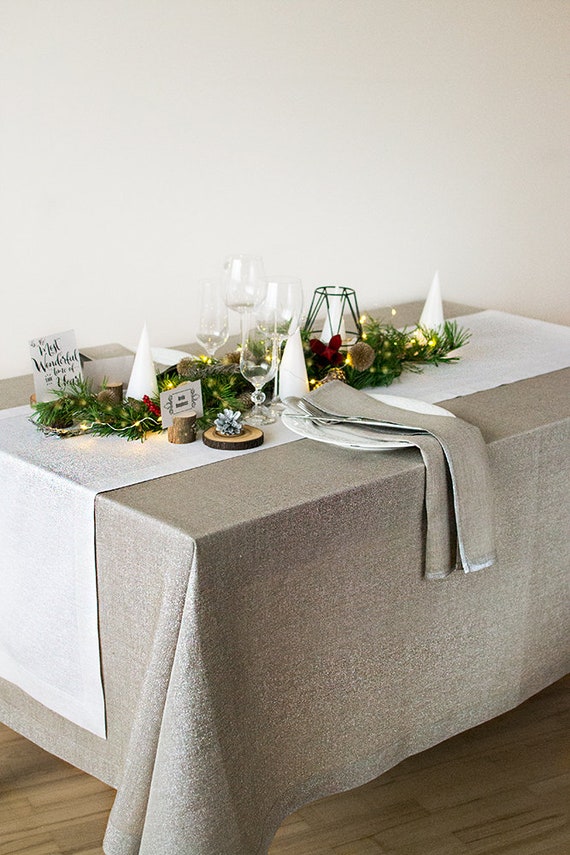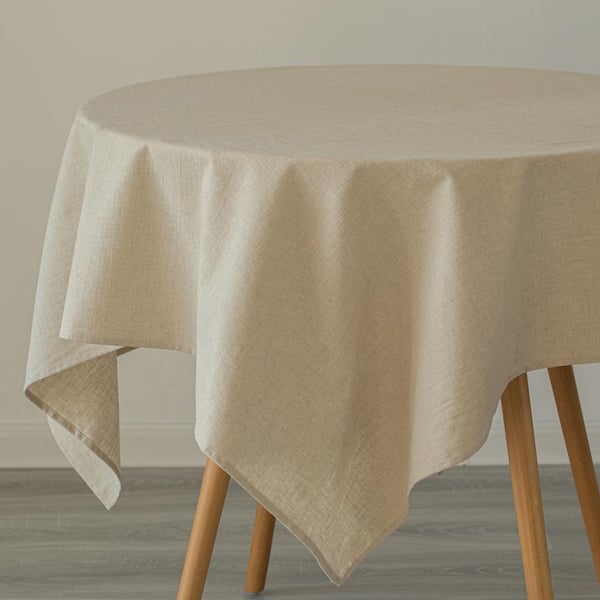Stylish Table Runner Ideas: Change Your Eating Experience
Stylish Table Runner Ideas: Change Your Eating Experience
Blog Article
Bed Linen Material Innovations: Discovering Modern Trends and Creative Applications in Design and Textile Industry
From lasting manufacturing methods to innovative weaving modern technologies, the advancement of linen is improving the landscape of the textile market. As we delve into the realms of creative design applications and the development of bed linen blends and hybrid fabrics, a brand-new chapter unravels in which linen's function in future fabric innovations takes center phase.
Lasting Practices in Bed Linen Production
Sustainable techniques in bed linen manufacturing have ended up being significantly critical in the textile market's initiatives to lessen ecological influence and promote moral sourcing methods. Bed linen, an all-natural fiber stemmed from the flax plant, offers a variety of advantages such as durability, biodegradability, and breathability. However, traditional approaches of bed linen production can involve considerable water consumption, chemical usage, and energy-intensive processes.
To deal with these difficulties, numerous fabric manufacturers are taking on sustainable methods throughout the linen manufacturing process. This consists of sourcing flax from organic ranches that stay clear of damaging pesticides and chemicals, implementing water-efficient retting methods to remove fibers from the flax stalks, and making use of eco-friendly dyes and coatings. In addition, some companies are buying renewable resource sources to power their manufacturing facilities and lowering waste with recycling and upcycling initiatives.
Technical Advancements in Linen Weaving
With the growing focus on sustainable methods in linen production, the textile market is now witnessing a surge in technical innovations especially targeted at revolutionizing the art of linen weaving. These innovations are reshaping the method linen materials are produced, supplying increased performance, top quality, and imagination in weaving strategies.
Among the key technological improvements in bed linen weaving is the assimilation of computerized looms. These sophisticated looms are geared up with software application that allows for complex and detailed layouts to be woven with precision. By digitizing the weaving process, suppliers can achieve higher consistency and accuracy in their bed linen textiles.
Moreover, improvements in yarn spinning technology have made it possible for the production of finer and more resilient bed linen threads - table cloths. This causes softer and smoother bed linen fabrics that preserve their high quality also after several uses and washes
In addition, the development of environmentally friendly dyeing procedures and finishes for bed linen textiles is gaining grip. These sustainable practices not only reduce the environmental effect however additionally satisfy the enhancing customer need for morally generated textiles.
Creative Style Applications for Bed Linen
Innovative imaginative strategies are progressively shaping the creative design applications for bed linen in the textile market. Bed linen's natural visual appeal and capacity to blend with various other textiles make it a favored selection for producing distinct garments and accessories that provide to the ecologically mindful consumer.
Furthermore, developers are explore linen in home decoration, using its breathable and long lasting nature to craft trendy furnishings such as curtains, bed linens, and upholstery. The appearance and drape of bed linen bring a sense of sophistication and convenience to interior rooms, adding a touch of beauty to contemporary homes.

Linen Blends and Hybrid Fabrics
:max_bytes(150000):strip_icc()/best-tablecloths-fw-FT-AFF1122-702aafd872a649dfaa0f1d1d0ffd171c.jpg)
Crossbreed textiles, on the other hand, take the idea of blending an action even more by including added aspects such as metallic strings, recycled products, or conductive fibers. These ingenious textiles not only increase the style opportunities but additionally present functional facets like conductivity, antimicrobial properties, or enhanced sturdiness. Crossbreed textiles are significantly being used in different markets, consisting of style, indoor design, and technical textiles, where the need for multifunctional products is on the surge.
Bed linen's Role in Future Fabric Innovations

In the world of future textile innovations, bed linen is anticipated to be a key gamer in the growth of sophisticated useful materials. Designers and scientists are checking out ways to improve linen's inherent qualities via technological improvements, such as integrating clever fabrics, nanotechnology, and performance coatings. These innovations aim to elevate linen's performance attributes, making it ideal for a broader series of applications, from activewear to protective garments.
In addition, the combination of linen with other all-natural or artificial fibers opens up limitless opportunities for creating novel textiles with special residential properties and functionalities. By leveraging bed linen's attributes and checking out ingenious blends, the textile industry is poised to present interesting advancements that satisfy evolving consumer needs and sustainability demands.
Conclusion
In conclusion, the expedition of sustainable methods, technical improvements, creative style applications, linen blends, and its function in future textile advancements highlight the constant development of linen fabric in the modern layout and textile industry. With a concentrate on advancement and creativity, the see this page convenience and environmentally friendly nature of bed linen make it a useful material for designers and suppliers alike, leading the way for further growths and advancements in the field of fabrics.
As we dive right into the worlds of imaginative design applications and the appearance of linen blends and hybrid materials, a new chapter unfolds in which linen's role in future textile advancements takes center stage.
Checking out the fusion of bed linen with various other fabrics has actually led to the emergence of ingenious blends and crossbreed textiles in the modern fabric industry. Linen blends supply a special mix of the attributes of linen with those of other fibers, resulting in fabrics that have improved homes such as enhanced durability, improved draping, and lowered wrinkling.The advancement of bed linen blends and crossbreed textiles has set the phase for Linen to play a critical function in driving future textile developments.In the realm of future fabric developments, linen is expected to be a crucial player in the growth of innovative practical textiles.
Report this page